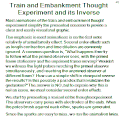File:Train and Embankment Thought Experiment And Its Inverse.gif
Appearance
Train_and_Embankment_Thought_Experiment_And_Its_Inverse.gif (500 × 500 pixels, file size: 525 KB, MIME type: image/gif, looped, 304 frames, 2 min 20 s)
File history
Click on a date/time to view the file as it appeared at that time.
| Date/Time | Thumbnail | Dimensions | User | Comment | |
|---|---|---|---|---|---|
| current | 08:55, 29 April 2023 |  | 500 × 500 (525 KB) | Prokaryotic Caspase Homolog | Added stop motion effects |
| 01:12, 2 June 2018 |  | 500 × 500 (525 KB) | Prokaryotic Caspase Homolog | some fine tweaks | |
| 23:59, 1 June 2018 |  | 500 × 500 (527 KB) | Prokaryotic Caspase Homolog | Change in countdown timing. Some clarification in wording. | |
| 21:22, 1 June 2018 |  | 500 × 500 (524 KB) | Prokaryotic Caspase Homolog | User created page with UploadWizard |
File usage
No pages on the English Wikipedia use this file (pages on other projects are not listed).

